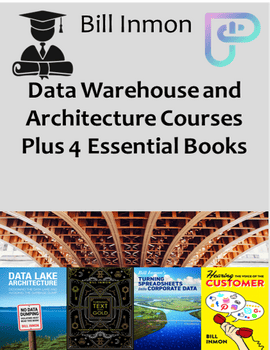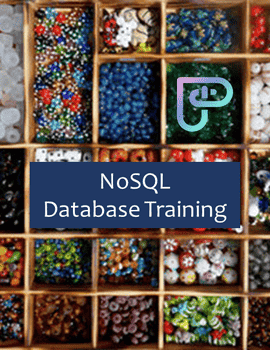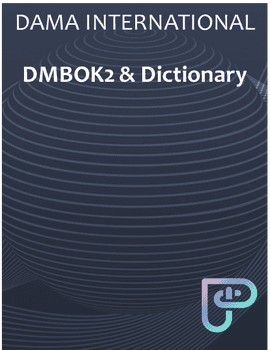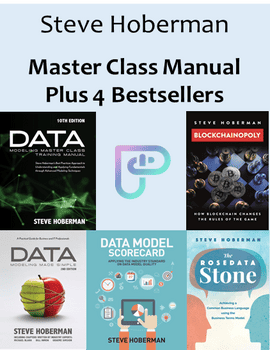Bill Inmon Data Warehouse and Data Architecture Courses (over 50 hours) plus Four Essential Books (PebbleU plus PDF Instant Downloads)
The Bill Inmon Course and Book Collection
About PebbleU
PebbleU is our interactive platform where you can take courses and read our books on any device, as well as annotate, add bookmarks, and perform intelligence searches. A collection is a group of one or more books and courses that you can annually subscribe to on PebbleU. If a collection contains books, you will also receive PDF Instant Downloads of those books. New features weekly!

See PebbleU in Action
Bill Inmon's Courses
Data Architecture Fundamentals

Learn from the legend, Bill Inmon, on how to create a successful data architecture. Learn about the data lifecycle, various data architectures and design approaches, and data architecture deliverables.
Data Warehousing Overview
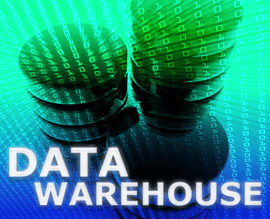
This course will show you how to build and maintain a data warehouse. The data warehouse is the single version of the truth. Learn about the different types of data warehouses such as geographically distributed data warehouses, exploration data warehouses, and global data warehouses. We reveal the critical success factors necessary for a data warehouse. We explore how to build a robust architecture including staging areas, system of records, data marts, data warehouse monitors, and the resource governor. We discuss data warehouse project management including milestones and methodology. We explore how to handle non-traditional data in a warehouse, such as documents, profile records, and dormant data. We cover how data warehousing relates to other enterprise initiatives such as Customer Relationship Management (CRM), Operational Data Stores (ODS), and Enterprise Resource Planning (ERP). We go through many examples, including a train company, steel company, and communications company. We discuss the various types of users of the data warehouse, including Farmers, Miners, Explorers, and Tourists.
Data Warehousing 2.0
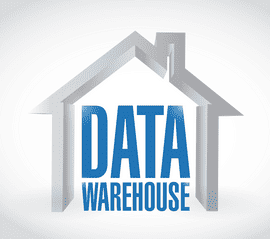
Over time the architecture of data warehouse has evolved towards an architecture known as Data Warehouse (DW) 2.0. In DW 2.0 there have been several advances including the inclusion of unstructured data into the data warehouse, the need for a formal and enterprise wide inclusion of corporate metadata. This course includes an overview to DW 2.0 including:
- An introduction to DW 2.0
- The DW 2.0 Lifecycle
- Archival within DW 2.0
- DW 2.0 Components
- DW 2.0 Database Design
- DW 2.0 Integrated Design
- DW 2.0 Interactive Sector
- DW 2.0 Linkage
Data Warehouse Implementation with the Corporate Information Factory (CIF)
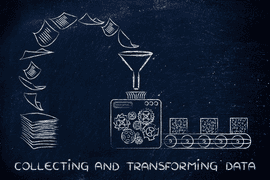
The Corporate Information Factory (CIF) is the robust architecture behind the data warehouse. Hear legendary Bill Inmon fully explain the CIF including its benefits and fit within the enterprise. He covers every component of the CIF including Legacy Applications, Staging Area, Extract, Transform, and Load (ETL), Data Warehouse, Data Marts, Data Warehouse Monitor, Exploration Warehouse, Big Data Analysis Environment, Archival Environment, Operational Data Store (ODS), Changed Data Capture (CDC), and Operational Backups. He explains Conformed Dimensions including the problems they solve. He covers how the Corporate Information Factory supports Drill Down Processing. He discusses the essential functional components of the architecture, as well as the importance of data warehouse iterative development including avoiding the “big bang” approach and ensuring that each piece adds immediate value. In addition, he presents on data ownership and data stewardship differentiating rights from responsibilities.
Data Lake Architecture Overview

Learn the value of a data lake and explore the different types of data lakes that can be implemented.
Textual Analytics In-depth

One of the most fundamental aspects of being able to use text for the purpose of decision making is that of being able to derive the context of text. Unstructured data does have context woven into its fabric. But the context must be “teased” out. Teasing out context is not a simple task because context exists in so many forms and structures. This course is about the work that must be done to unstructured data in order to reproduce it into a form that is suitable for analytical processing. Learn all about textual disambiguation in this video including:
- Visualization.
- Textual disambiguation as an enablement technology
- Importance of context
- Corporate Data
- Document Fracturing / Named Value Processing
- Homographs / Proximity Analysis
- Integrating text
- Methodology Roadmap
- Move/Remove Facility
- Natural Language Processing (NLP)
- Search and Analysis
- Taxonomies
- Taxonomy Processing
- Textual Disambiguation – Basic Editing
- Textual Disambiguation – Contextualization
- Textual Disambiguation – Filtering
- Textual Disambiguation – Interpretation
- Textual Disambiguation – Standardization
All about Metadata
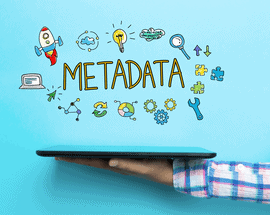
This course provides comprehensive coverage of the different approaches to a sound database design. We cover:
- Different components of the Corporate Information Factory (CIF).
- About Dimensional Data Modeling
- The Federated Data Warehouse
- A Flat File Approach
- Granularity in the Data Warehouse Environment
- Normalization and Denormalization
- Online Transaction Processing (OLTP)
- Relational Database Design
Bill Inmon's Books
Data Lake Architecture
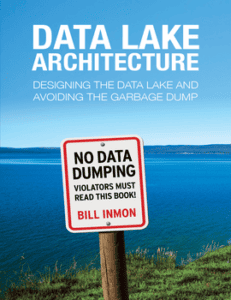
Organizations invest incredible amounts of time and money obtaining and then storing big data in data stores called data lakes. But how many of these organizations can actually get the data back out in a useable form? Very few can turn the data lake into an information gold mine. Most wind up with garbage dumps.
Data Lake Architecture will explain how to build a useful data lake, where data scientists and data analysts can solve business challenges and identify new business opportunities. Learn how to structure data lakes as well as analog, application, and text-based data ponds to provide maximum business value. Understand the role of the raw data pond and when to use an archival data pond. Leverage the four key ingredients for data lake success: metadata, integration mapping, context, and metaprocess.
Turning Text into Gold
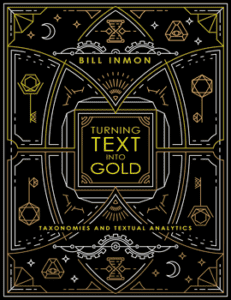
This book will introduce you to the world of taxonomies and textual analytics.
In our distant past, we attempted to create wealth by turning everyday substances into gold. This was early alchemy, and ultimately it did not work. But the world has changed. Today we have a type of “modern alchemy” that really can create gold. We can transform voluminous text into a wealth of knowledge.
Text is a common fabric of society, yet it is still challenging for our technology to make sense of text. This is where taxonomies can help. In this book, legendary Bill Inmon will introduce you to the concept of taxonomies and how they are used to simplify and understand text. We emphasize the practical aspects of taxonomies, and the subsequent usage of taxonomies as a basis for textual analytics.
This book is for managers who have to deal with text, students of computer science, programmers who need to understand taxonomies, systems analysts who hope to draw business value out of a body of text, and especially those who are struggling to decode data lakes. Hopefully for those individuals (and many more), this book will serve as both an introduction to taxonomies and a guide to how taxonomies can be used to bring text into the realm of corporate decision-making.
Turning Spreadsheets into Corporate Data
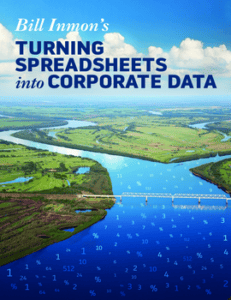
For years, business users have leveraged spreadsheets for storing and communicating data. Although spreadsheets may be easy to create and update, making important corporate decisions based on spreadsheets is risky due to the lack of data credibility. Whether you are a manager, developer, end user, or student, this book will help you turn spreadsheet data into credible, useful, reliable data that can be trusted in order to make important decisions.
A chapter is dedicated to each of the following topics:
- Brief history of spreadsheets
- Spreadsheet paradox
- Spreadsheet varieties
- The PDF spreadsheet
- Spreadsheet formatting
- Spreadsheet disambiguation
- The intermediate database
- The ssdef database
- The corporate database
- The metadata database (mnemonic database)
- Political considerations
- Data modeling and the spreadsheet
- Case study
Hearing the Voice of the Customer
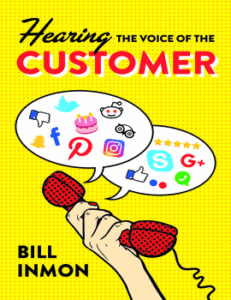
Increase the awareness of your customer’s behavior to survive and excel within your industry.
One hundred years ago, the voice of the customer was easily and routinely heard by the shopkeeper. In small towns, the shopkeeper knew everyone. Today’s world has gotten much bigger and much more complex. No longer does the store owner personally know everyone who comes into the store. Yet there are three important abilities technologies offer that make it possible to listen to the voice of the customer today:
- The ability to acquire, store, and manage huge amounts of data
- The ability to read and understand text in a computerized environment
- The ability to visualize data
.
Faculty may request complimentary digital desk copies
Please complete all fields.
